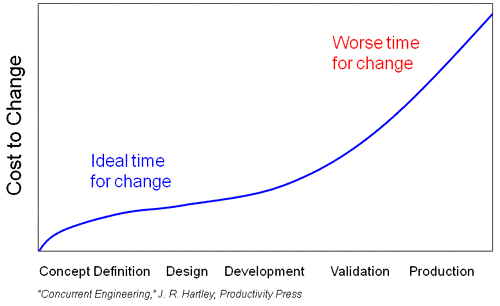Why Adopt Performance Engineering? To stay ahead of the Curve!
Time and again, when an idea takes off and is in the implementation stage, developers and testers work relentlessly to make the product achieve as much perfection as practically feasible. Often, however, in terms of demand generation, the product comes off as a guess, and does a poor job of hitting the bulls-eye. It may still be doing reasonably, but in terms of customer satisfaction, it lags far behind.
[Tweet “Performance engineering helps achieve greater insights into end-user requirements”]
Customers today have undoubtedly gotten smarter, choosier, and are swayed lesser into whimsical purchases. A majority of today’s technological industry consists of markets in perfect competition, and such markets revoke all monopolistic power. Gone are the days where opportunists like Edwards Bernays could hoodwink unsuspecting customers by launching campaigns with ulterior motives. His “Torches of Freedom” campaign, for example, was successful in duping women to think that emancipation and equality meant smoking of cigarettes. In today’s world, customers are deeply interconnected, leading foul play to be immediately detected.
This calls for it being of paramount importance for organizations to ensure that customers approve of the products and services they aim to provide. With updated technology and big data, a minimum viable product (MVP) is the best way to test the success of such a product or service. Hence, agile methodology plays a massively dominant role in ensuring that the customer remains satisfied and organizations remain profitable. This is where performance engineering steps into the fray.
Traditionally, majority of the organizations used testing as an aftermath of product design. The priority was first to finish the product and later to fix it. Contrary to common belief, performance problems are aplenty, just by the virtue of complexity of the interrelated world we live in today. The flaw is often not in the coding but actually in the fundamental architecture of the product. In addition, responsive software is affordable, particularly due to Software Performance Engineering methods. Today’s leading technological corporations remain successful mainly because they completely leverage the latter insight in particular.
There are high costs that come into play when changes in the design of the product are made at a later stage in the development. Hence, it remains crucial that the best performance engineering approach or methodology is determined in the early stages of critical projects. Such approaches also lead to further automation of testing, which is both, time-saving and innovative, from a quality assurance standpoint.
[Tweet “Performance engineering saves time and money by allowing #early design changes”]
Performance engineering (and performance testing) enable assessing architectural alternatives and also enable carrying out root-cause analysis, among many other advantages. The image below illustrates the need for performance engineering activities to be early on in the system life cycle.
“Performance engineering activities should begin early in the system’s life cycle when an opportunity exists to influence the concept or design of the system in a way that ensures performance requirements can be met.”

Source: https://www.mitre.org/publications/systems-engineering-guide/acquisition-systems-engineering/acquisition-program-planning/performance-engineering-
Another major role performance engineering plays is in the collection of data for which performance is being monitored. In terms of gaining further knowledge into customer usage trends through in-depth analysis, this collected data becomes a major asset to the organization.
Performance testing is an interwoven part of performance engineering for the determination of speed and effectiveness of a system or product. Ideally, this involves quantitative tests done in laboratories in order to measure and record the response time under which systems operate. Load and stress testing are crucial service offerings in performance testing, because they help determine the sustainability of the product under strong duress. Technological organizations are further transitioning into hybrid modes of operation, where traditional frameworks are followed with widespread futuristic practices. The best of both worlds is essential for an efficient and everlasting transition, as conveyed succinctly by the following quote.
Automation applied to an inefficient operation will magnify the inefficiency.
—BILL GATES
In Conclusion:
Cigniti provides an entire range of performance testing solutions to its customers using Frameworks designed after several years of research by its experienced testers. Our Performance testing Services are designed to meet your needs at any stage of the software development lifecycle to target and solve performance defects early in your project’s development lifecycle. Cigniti draws a substantial amount of performance testing expertise from diverse applications, technologies, and business. Cigniti has built a dedicated Performance Testing Center of Excellence to generate performance testing value creators.





Leave a Reply